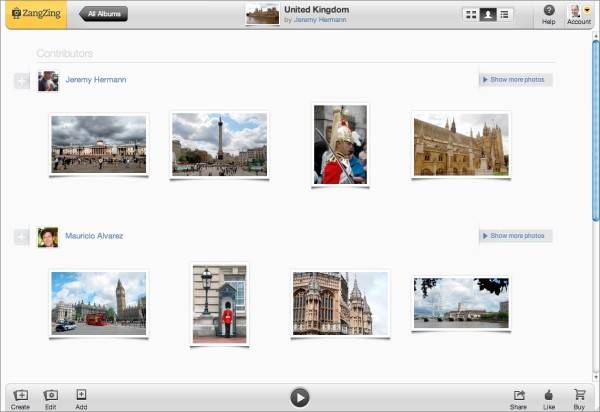A new photo-sharing startup launches today in private beta, no doubt entering what it an incredibly crowded space. But ZangZing hopes that its approach is unique enough to make it stand out from the rest.

That approach differs from many of the other photo-sharing apps on the market in two key ways. First, ZangZing makes it easy to pull together photos from multiple sources, uploaded by multiple people into one single album. Second, ZangZing emphasizes privacy. Using a photo service, in other words, needn’t be a trade-off between privacy and group sharing.
“The state of photo sharing on the web feels like it’s stuck in the dark ages,” says CEO and co-founder Joseph Ansanelli. “With ZangZing, we are enabling groups to easily create and share albums together in a way that is much more simple and beautiful.”
When you create a ZangZing album, you can invite people to view but also to be contributors. Contributors can add photos via email or from their hard-drive via an uploader. Photos can also be imported from Facebook, Flickr, Instagram, Kodak Gallery, Photobucket, Picasa Web, Shutterfly, and SmugMug. This helps users consolidate their photos into one location, pulled in from multiple, scattered sources.

Each album has its own privacy and sharing settings. You can opt to make an album widely available, sharing via Facebook or Twitter, or you can add password protection so that only certain people have access.
This sort of granular control, along with the ability to consolidate photos in one location, do give ZangZing a lot of appeal. The site also features a simple and well-designed layout that features the photo-browsing experience.
But that web-based browsing experience may not dovetail with how more and more people are snapping and sharing photos: we’re doing this via our mobile phones, not via the Web.
Nonetheless, the desire for a safe place to share and store photos online persists, and ZangZing thinks it’s nailed both the privacy controls and the importance of having one single album to hold memories.










